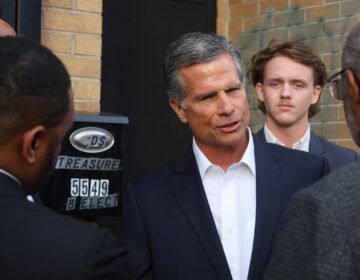More low-wage workers would escape poverty if tax credit included childless

The U.S. Capitol in Washington. (AP Photo/Alex Brandon
Those of us focused on the well-being of Americans with low incomes have many concerns about the incoming Trump administration, but we see one ray of hope for progress — and for bi-partisan cooperation.
Those of us focused on the well-being of Americans with low incomes have many concerns about the incoming Trump administration. If President Trump and Republicans in Congress repeal the Affordable Care Act (and especially the law’s expansion of Medicaid), millions of people will lose health insurance. If the Republicans move to turn the original Medicaid and Food Stamp programs into block grants that don’t give states enough funds to provide the current level of benefits and meet rising needs in a future recession, millions more will suffer. As advocates, we will be fighting those proposals, and we hope to see Democrats in Congress and even some Republicans do the same.
But we see one ray of hope for progress — and for bi-partisan cooperation. The Earned Income Tax Credit has had a major impact in promoting work and reducing poverty in America, and it has a long history of bi-partisan support. Democrats and Republicans might be able to come together to fix one flaw in the program: It does little to nothing for millions of struggling workers who are not raising children.
Because of that limitation, many of these workers are pushed into, or deeper into, poverty by federal taxes each year. Expanding the EITC to include these workers and ensure that they are no longer taxed into poverty should be a top priority for both parties next year.
The EITC has helped low-wage workers and their families since it was enacted in 1975 by a Democratic Congress and signed by Republican President Gerald Ford. It has been expanded by bi-partisan efforts since.
The EITC offsets federal payroll and income taxes and allows low-income workers to keep more of their hard-earned money at tax time. When you’re making $7, $8, or even $10 an hour, every penny counts. Workers use the money they get back from the EITC to stay afloat and pay for basic needs such as groceries and a decent place to live.
The impact of the EITC is greater in the long term. It creates a powerful incentive for people to work more and develop their skills because the EITC increases with each additional dollar of earnings until reaching the maximum level. This lifts even more families out of poverty.
Between the years 2011 and 2013, an average of over six million people, including three million children, were lifted out of poverty by the EITC. Twenty million more benefitted from the program, although the EITC by itself was not enough to raise their incomes above the poverty line. An average of 152,000 people in Pennsylvania, including 73,000 children, and 156,000 people in New Jersey, including 79,000 children, escaped poverty each year due to the EITC. And note, these figures only include the direct impact of EITC benefits. If we include an estimate of the wages received by people who are encouraged to work by the EITC, the number of people who escape poverty is roughly doubled.
The benefits of the EITC don’t just flow to individual families. Encouraging work and putting more money in the hands of those with low incomes helps generate increased economic activity in our communities. In 2014, the EITC put $2.1 billion of purchasing power in the hands of Pennsylvania residents and $1.4 billion in the hands of New Jersey residents.
A central goal of the EITC has always been to ensure that federal taxes do not push workers into poverty or deeper into poverty. But that’s not the case for low-wage workers not raising children, who are either largely or entirely excluded from the EITC.
These workers also miss out on the EITC’s work incentive, and their communities miss out on the boost to economic activity that comes from more workers having enough money to spend on food and other essential goods and services.
Republican House Speaker Paul Ryan joined President Obama in proposing an expansion to the EITC to include workers not raising children. In explaining his proposal, he said, “We should make sure that in this country, it always pays to work.” Senator Sherrod Brown (D-Ohio) and Representative Richard Neal (D-Massachusetts), and Senators Cory Booker (D-New Jersey) and Tammy Baldwin (D-Wisconsin), have put forward even bolder plans.
These proposals would have a dramatic impact in our states. The Ryan proposal would help 544,000 individuals in Pennsylvania and 343,000 in New Jersey become newly eligible for the EITC or eligible for a larger credit. The Brown-Neal proposal would help 659,000 workers in Pennsylvania and 425,000 in New Jersey. Among them would be tens of thousands of former members of the military, young workers aged 21-24, workers in rural areas, and Latino and African American workers.
Advocates for low-income Americans may be spending much time fighting againt proposals we cannot accept. But, at the same time, we can’t afford to miss opportunities to make lives better for working people, as long as it doesn’t come at the cost of supporting deep reductions to existing programs. An effort to help and empower low-income workers by enacting a much-needed expansion of the EITC would be a good stop forward, and we hope Senators Casey, Toomey, Menendez, and Booker and our other members of Congress will actively support it while resisting reductions to health care and food stamp benefits. Thousands of working people struggling to get out of poverty in New Jersey and Pennsylvania are counting on them.
—
Marc Stier is the director of the Pennsylvania Budget and Policy Center. Jon Whiten is vice president of New Jersey Policy Perspective.
WHYY is your source for fact-based, in-depth journalism and information. As a nonprofit organization, we rely on financial support from readers like you. Please give today.




